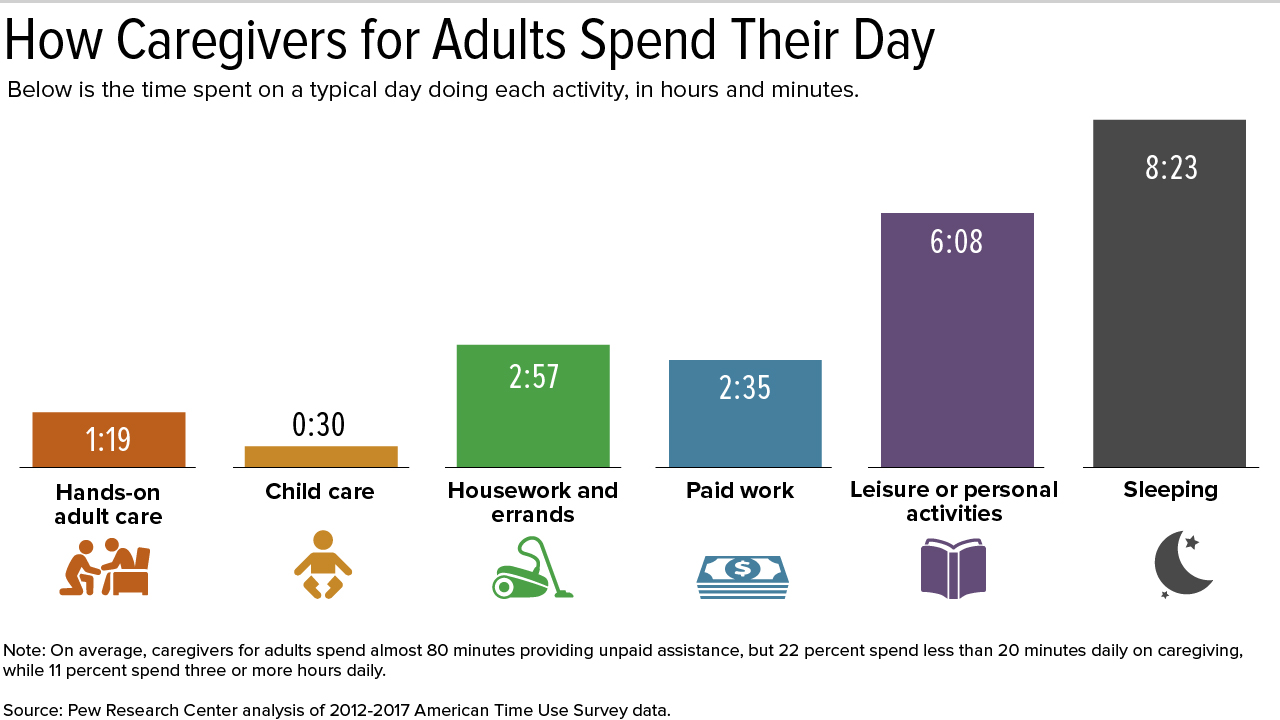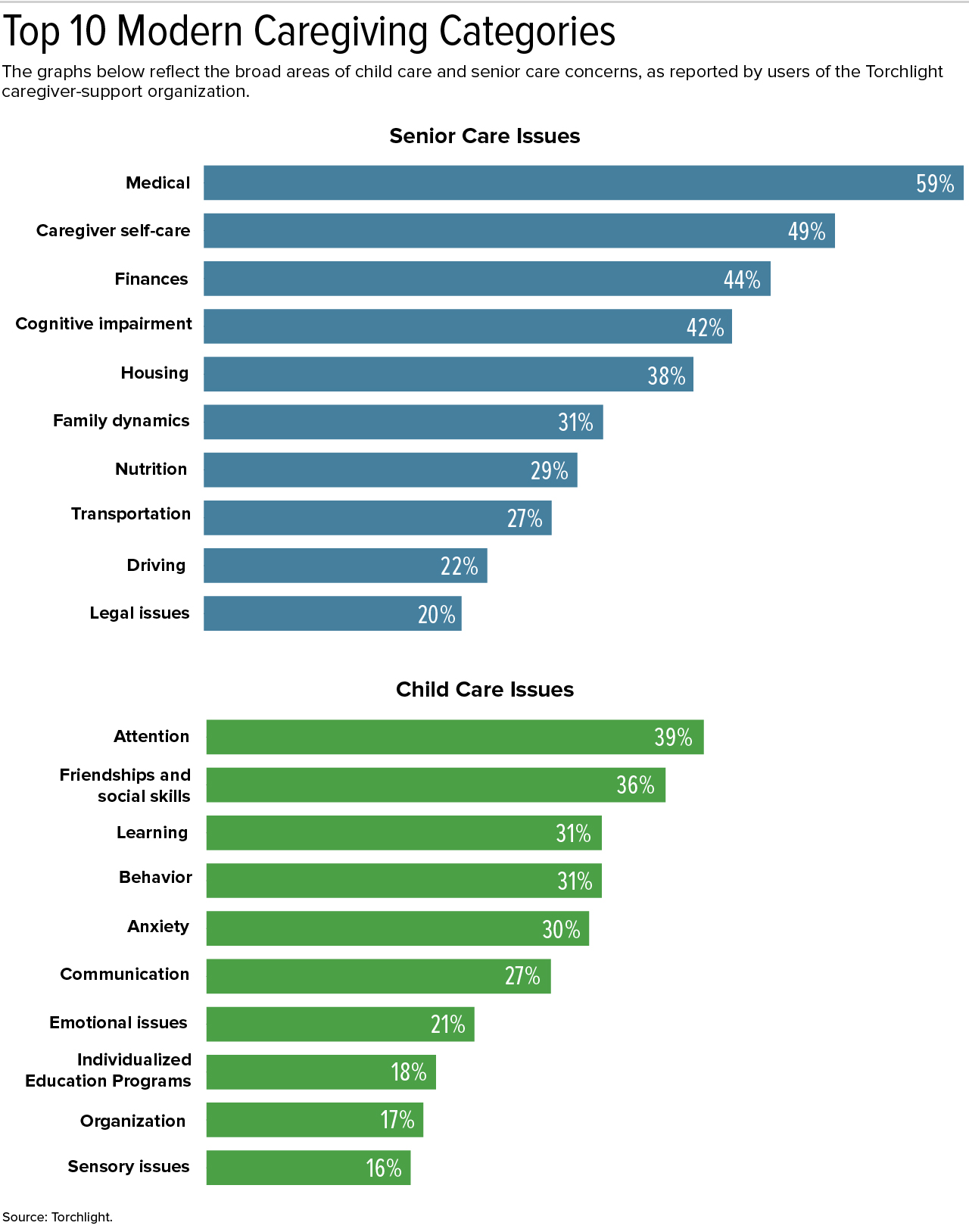More Workers Than You Realize Are Caregivers
Support your employees by rethinking how you define caregiving

Are you an unpaid caregiver? One in six U.S. employees are, according to a 2015 AARP report, spending an average of more than 20 hours per week providing assistance of some kind to a friend or relative.
The caregiver may look after a sick spouse, drive an older person to doctor's appointments, or help a child with a school-related difficulty that requires taking time away from the office.
But while most rearrange their work schedule, decrease their hours or take an unpaid leave to handle their responsibilities, the term "caregiver" doesn't resonate with them.
They simply see themselves as being a good friend, parent, daughter, son, spouse or other family member who provides a loved one unpaid assistance with daily living needs or medical care, said Adam Goldberg. He is CEO and founder of Torchlight, a Boston-based online platform that provides resources for caregiving employees.
There may be other reasons these employees do not identify themselves to employers as caregivers. They may want to be viewed as strong and capable and are uncomfortable sharing their family's struggles. And while there are laws to guard against discrimination—such as the Family and Medical Leave Act (FMLA) and the Americans with Disabilities Act—some workers fear employers will think they are less committed to their work if they ask for a schedule change or other accommodation.
But caregiving takes a toll.
Nearly half (49 percent) of caregiver employees are often late to work, leave early or take time off because of their caregiving responsibilities; 7 percent are warned about their performance or attendance, according to the 2018 report Taking Care of Caregivers. It was co-authored by Renee Albert, Facebook's director of benefits; Mark Victor Hansen, the co-creator of the Chicken Soup for the Soul series; and Michael Walsh, the CEO of Cariloop, a health and wellness company in Dallas.

The caregiver's organization also pays a price. The Family Caregiver Alliance found that elder care alone results in about $5 billion in absenteeism annually. And a 2017 report from the Northeast Business Group on Health (NEBGH), Supporting Caregivers in the Workplace: A Practical Guide for Employers, found:
- Caregivers miss on average six to seven days of work annually because of their responsibilities.
- Caregivers cost employers an estimated 8 percent more—or $13.4 billion per year—in health care costs than noncaregivers because their responsibilities can be emotionally draining and physically exhausting.
These factors—combined with lost productivity and the expense of recruiting and training new people to replace caregivers who leave their employers—cost organizations nearly $38 billion annually, the NEBGH estimated.
A Modern Definition of Caregiving
Goldberg suggested broadening the traditional definition of caregiving beyond parental-leave policies to "fully encompass the day-in-and-out challenges that any adult may face related to their family members."
In a report on modern caregiving challenges, Torchlight looked at the most pressing problems caregivers of seniors and children face. For older loved ones, related challenges include assessing housing options; managing cognitive impairments, such as dementia; arranging services such as home-care providers; and dealing with legal affairs and complex financial planning, such as reverse mortgages.
Child-rearing issues caregivers deal with include addressing mental health and behavior, such as anxiety and depression; advocating for special-education needs; navigating social challenges, such as bullying; helping children manage screen time; dealing with social media and gaming addictions; and assisting children with managing their time. Completing homework is especially challenging for a child with attention deficit hyperactivity disorder (ADHD), noted Goldberg, who has a child with ADHD.

What Employers Can Do
Employers should be specific when asking about the types of assistance caregiving employees want and how they want it delivered. An employer might inquire if workers would like a webinar on managing a child's screen time or a podcast on helping a child deal with bullying. Would they like resources for finding housing options for aging relatives or to hear a speaker on how to guard against scams targeting seniors?
Last year, Starbucks began offering critical-illness insurance for the parents of employees in China. It also pays longer-term senior care planning for its U.S. employees through a provider and will offer all employees 10 subsidized backup child or senior care days annually.
Deloitte offers 30 days per fiscal year for emergency dependent care, covering infants through teens and adult relatives.
Also, don't separate caregiving from paternity, maternity and parental-leave policies. Bristol-Myers Squibb broadened its family-leave definition to include family members of all ages who need care.
[SHRM members-only toolkit: Managing Work/Life Fit: Dependent Care and Elder Care]
It's important to create a workplace culture where employees feel comfortable using such benefits.
"Training managers to be able to support that culture is critical," Goldberg said. "Everyone needs to be brought into this [conversation] for that culture to take hold."
He suggests the following:
- Provide training for HR and front-line managers on caregiving and family issues, the FMLA and state-specific family leave laws. Also, the Equal Employment Opportunity Commission has enforcement guidance on the unlawful disparate treatment of workers with caregiving responsibilities.
- Alleviate the stigma around taking time off to handle any family challenge. Ask senior leaders to share their stories about caregiving.
- Support employee resource groups (ERGs). Companies that do not have ERGs can offer forums for discussing family topics using social media groups, such as Yammer and Slack.
- Review flexible-work and family-leave policies and assess if your workplace is caregiver friendly.
- Allow workplace flexibility options.
- Do away with no-fault absenteeism policies for hourly employees that base termination on the number of times the employee has been tardy or absent, no matter the reason.
- Implement recruitment practices to target those looking to re-enter the job market after caring for someone.
An organization run by AI is not a futuristic concept. Such technology is already a part of many workplaces and will continue to shape the labor market and HR. Here's how employers and employees can successfully manage generative AI and other AI-powered systems.



